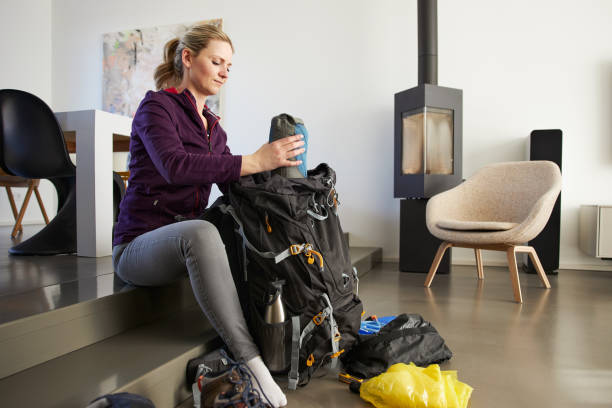Hiking was a huge hit in 2020 when everyone was on COVID lockdown. In 2020, the number of hikes was 171% higher than in 2019. The number of hikers increased 135%.
This makes sense because hiking is one of the most safest COVID activities, as it takes place outside, away from group settings. Dr. Edward Phillips is an assistant professor at Harvard Medical School who specializes in physical medicine and rehab. “What’s better than getting out in nature for some therapeutic time to get away from the confined spaces of a crowded office?” asks Dr. Edward Phillips, assistant professor of physical medicine and rehabilitation at Harvard Medical School.
Walking is not enough.
Hiking is a great way to improve your body and mind. It’s a great way to build muscles in your lower body. While hiking uphill, you’ll work your hips, buttocks, and quads.
Walking is a great way to get exercise, but it may not be the best option for maintaining an aerobic intensity. “People walk at a slow pace, with lots of stops and starts. This keeps their heart rate down,” Dr. Phillips says.
While walking on an even surface is easier, climbing up and down uneven terrain takes more energy. You have to make your body work harder. This increases heart rate and burns more calories.
You can also practice staying on your feet by finding your footing. It improves your balance and helps you avoid dangerous falls. “When you push your body to adapt, it will,” Dr. Phillips says. If the terrain of the hike puts your balance under pressure, your internal balance system will improve.
Hiking is also good for your mental health. Many studies show that older adults who spend time in nature regularly have better sleep and less anxiety. You can hike with or without others. Researchers have found that group nature hikes are as beneficial to mental health as solo walks.
Take the trail
It’s better to start small with hiking and work your way up. “Start with easy trails that are flat and short, like a one-mile distance, to see how you go,” advises Dr. Phillips. As your fitness improves, you can progress to trails that are more difficult and have greater elevations. You can also increase the distance. Prepare yourself well before you go on a hike. Here are a few tips.
Increase your walking. Start a walking program if you need to improve your endurance. Start by walking daily for 10-20 minutes, and then build up from there. “Another method to increase hiking endurance is to walk on a treadmill with an incline, to simulate hiking uphill,” explains Dr. Phillips.
Safety is the priority. Let a family member or friend know your hiking plans and how long you will be out. Use a GPS or hiking app, or bring your smartphone and a map of the area.
Grab a pair of walking poles. Walking poles help you to navigate difficult terrain, and they support your knees as you walk. Poles can also help you avoid slipping on uneven terrain.
The metal tip of the walking pole is designed for use on trails. Rubber tips can be attached to concrete or asphalt surfaces. Most walking poles are adjustable, and they can be collapsed for easy storage inside a backpack. You can purchase them in a camping or sporting goods store, where the staff will offer advice on products, adjust heights, and provide a brief lesson on how to use them.
Stay Hydrated. Consume water before, during, and after hiking. Set your phone’s or sports watch’s timer to remind you to stay hydrated.
Be aware of the weather. Wear layers you can remove easily and wrap around your waist if you are unsure about the forecast. Pack a poncho, raincoat, or windbreaker in your backpack.
Protect yourself. Buy hiking or trail shoes that have good ankle support. Wear socks that reach your calf to protect yourself from scratches, bites, and scrapes.

